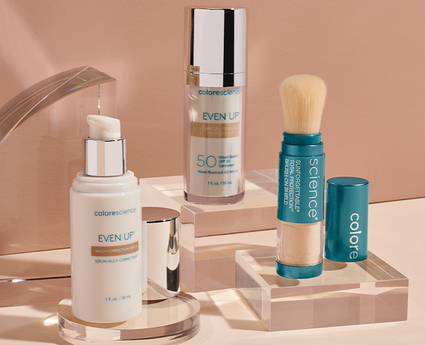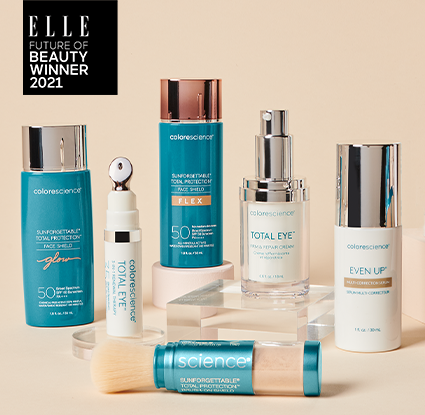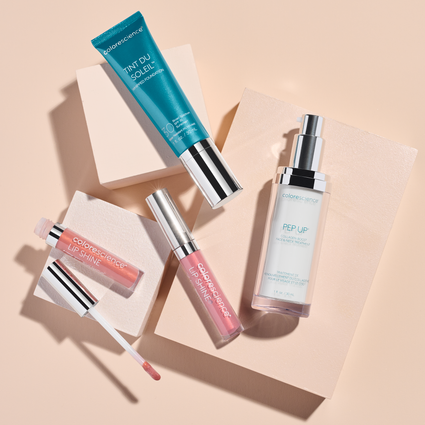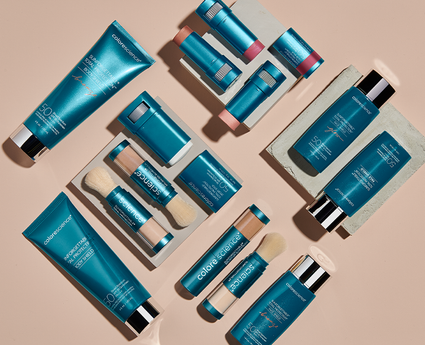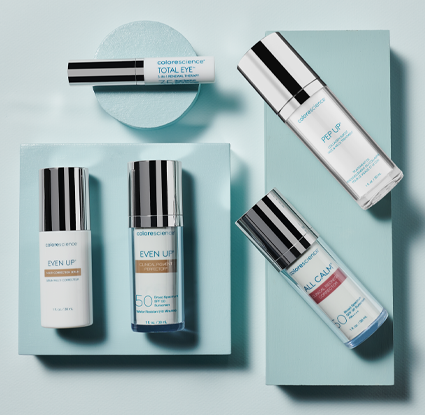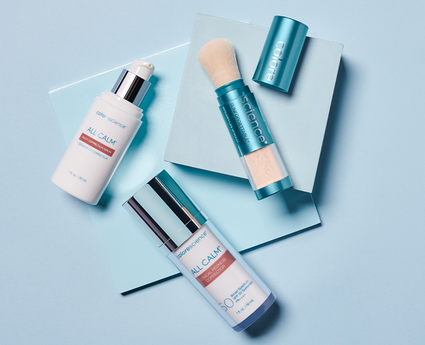Hawaii Sunscreen Ban: What You Need to Know
It's essential to protect your skin from ultraviolet rays, especially when you're spending a lot of time in the sun—like on vacation, for instance. While sunscreen provides valuable protection, it's important to know that you can’t just use any sunscreen everywhere you go. Recently, Hawaii banned sunscreen that contains certain ingredients.
While sunscreen protects your skin, some ingredients can damage coral reefs. To prevent damage to the environment and comply with the ban, you'll need to choose a sunscreen that meets their requirements.
In this post, we'll take a closer look at Hawaii's sunscreen ban and identify the ingredients you should be avoiding. We'll also help you choose sunscreens that are free of banned ingredients and can give your skin the protection that it needs. Keep reading or use the links below to get started.
- Why Is There a Hawaii Sunscreen Ban?
- What Sunscreen Ingredients Are Banned in Hawaii
- Does the Sunscreen Ban Apply to Both Locals & Tourists?
- What Does Reef Safe* Sunscreen Mean?
- How to Find a Quality Sunscreen Safe to Use in Hawaii
Why Is There a Hawaii Sunscreen Ban?
If you've seen headlines reading "Hawaii Bans Sunscreen," you might have some questions about what this ban is all about. Hawaii hasn't banned sunscreen, but it has banned sunscreen products that contain certain ingredients.

Recent research has shown that some sunscreen ingredients are highly damaging to coral reef ecosystems. Exposure to these ingredients has been linked to coral bleaching and coral DNA damage. Since the coral reefs are already endangered, Hawaii has taken protective measures. The state was the first to ban the distribution and sale of products containing these ingredients.
When Did the Sunscreen Ban in Hawaii Go Into Effect?
Hawaii's first sunscreen ban, which blocked the distribution and sale of products containing oxybenzone and octinoxate, went into effect on January 1, 2021. A proposed ban that prohibits sunscreens containing octocrylene and avobenzone is set to take effect on January 1, 2023, if it's passed by the state senate.
In addition to these state-wide bans, there are local ordinances that ban some sunscreens in parts of Hawaii. On October 1, 2022, Maui County will ban non-mineral sunscreen. Hawaii County has passed a similar ban that will take effect on December 1, 2022.
What Sunscreen Ingredients Are Banned in Hawaii
The sunscreen ingredients banned in Hawaii have the potential to cause significant environmental damage. Read on to learn more about these ingredients and why they've been banned.

Oxybenzone
Oxybenzone is a chemical compound that can slow the absorption of UVA and UVB rays. Unfortunately, this ingredient is toxic to coral reefs and other types of marine life. It's considered to be a skeletal endocrine disruptor and can cause DNA damage to coral reefs.
Octinoxate
Octinoxate is the most commonly used sunscreen ingredient in the United States. Also known as cinnamate ester, this chemical provides protection from UVB rays but does not block UVA rays. Like oxybenzone, it's been shown to have a harmful effect on marine ecosystems.
Avobenzone
Avobenzone is a UV protector that can block UVA I, UVA II, and UVB rays. Studies have shown that it's a potential endocrine disruptor that can harm marine life and make coral less resistant to high temperatures. This ingredient isn't currently banned in Hawaii, but there's a proposed ban that could take effect in 2023.
Octocrylene
Octocrylene is a chemical sunscreen agent that provides UVB protection and limited UVA protection. Recent studies have found that octocrylene can degrade into benzophenone, a carcinogen, and herbicide that can be toxic to aquatic organisms. Similar to avobenzone, a proposed ban could block the sale and distribution of products containing octocrylene in 2023.

Does the Sunscreen Ban Apply to Both Locals & Tourists?
The sunscreen ban in Hawaii applies to everyone in the state, including tourists. You can and should wear sunscreen when you visit Hawaii, and you can bring sunscreen with you when you travel to the state. However, you'll want to make sure you choose a product that's fully compliant with their laws.
Are There Other Places That Have Sunscreen Bans?
Several locations have banned sunscreens that contain potentially harmful sunscreen ingredients, including Mexico, Aruba, the U.S. Virgin Islands, and Bonaire. Currently, Hawaii is the first and only state with a sunscreen ban, but some U.S. cities, like Key West, have banned sunscreen ingredients as well.
What Does Reef Safe* Sunscreen Mean?
The term "reef-safe*" is usually used to describe sunscreens that don't contain chemicals that have been shown to harm coral reefs. Many reef-safe sunscreens use mineral UV filters, such as zinc oxide or titanium dioxide. Since terms like "reef-safe" and "reef-friendly" aren't regulated, it's always important to confirm that a product is free of harmful ingredients.

Colorescience reef-safe* sunscreen is all-natural and free of chemicals that are damaging to coral reefs. Not only is it environmentally friendly, but it also provides protection from UVA and UVB rays.
*Reef safe as defined by Hawaii’s legislation related to the ban of SPF sunscreen products that contain oxybenzone or octinoxate.
How to Find a Quality Sunscreen Safe to Use in Hawaii
Sunscreen is an important part of any sun protection strategy. The right products can block and absorb UV rays without causing damage to marine life. If you're searching for high-quality sunscreen that you can use in Hawaii, these are a few of the things you'll want to look for.
Chemical-Free
Hawaii hasn't banned all chemical sunscreen filters, but bans against chemical sunscreens have been introduced in certain parts of the state. In addition, some sunscreens contain certain ingredients that are not recommended for pregnant women or children. That's why it's best to choose a mineral sunscreen that doesn't use chemical filters.
Some chemical sunscreen filters like oxybenzone and avobenzone absorb UV rays. Mineral ingredients like zinc oxide and titanium oxide sit on top of the skin and provide a barrier against the sun. And, they don’t expose you to harmful chemicals that can enter your bloodstream.
Mineral sunscreens provide defense against environmental stressors. Instead of relying on dangerous chemicals, our products use trusted ingredients like zinc oxide. Many Colorescience products also contain antioxidants and ingredients with skin benefits, like niacinamide.
Broad-Spectrum
Broad-spectrum sunscreen provides protection against both UVA and UVB rays. UVA rays can increase the risk of skin cancer and also cause premature aging. UVB rays are a leading cause of skin cancer and can also cause sunburn.
Since the sun can harm your skin in many ways, it's best to look for broad-spectrum products that provide protection against both types of UV rays. The FDA requires that all broad-spectrum sunscreens provide a comparable level of UVA and UVB protection. When zinc oxide and titanium dioxide are used together, they can provide broad-spectrum protection.

SPF 30 or Higher
SPF values measure the amount of solar energy it takes to damage skin that's protected by sunscreen. High SPF sunscreens provide more protection from UV rays. It's best to wear sunscreen that's SPF 30 or higher. If you have a higher risk of sunburn or skin cancer, you may want to look for a product with an even higher SPF.
SPF 30 sunscreens can block 96.7% of UVB rays, while SPF 50 sunscreens can block 98% of UVB rays. This may not seem like a big difference, but that extra protection could pay off, especially if you're spending all day in the sun. Any broad-spectrum sunscreen that's SPF 30 or above will also give you UVA protection.
Easy to Use on the Go
Even the best sunscreen won't do you any good if you forget to apply it. Your sunscreen will also start to break down when you spend time in the sun. If you want consistent protection, it's also best to reapply sunscreen every two hours. However, if you’ve been swimming, it’s recommended to apply every 40 minutes or so.
The easiest way to make sure you wear sunscreen is to look for products that you can easily use when you're on the go. If you carry products like the Sunforgettable® Total Protection™ Brush-On Shield and the Sunforgettable® Total Protection™ Sport Stick with you throughout the day, you can conveniently apply and reapply sunscreen as needed.
Colorescience sunscreen meets and goes beyond the above criteria. Whether you're searching for reef-safe sunscreen or looking for sun protection for your face, you can't go wrong with our chemical-free products.
Protect Yourself & the Environment
UV rays can be very damaging to the skin, especially when you're spending lots of time in the sun. Wearing sunscreen can help you avoid sunburn, prevent photoaging, and can even reduce the risk of skin cancer. While sunscreen offers many benefits, certain sunscreen ingredients banned in Hawaii can be damaging to the environment.
Thankfully, this doesn't mean you have to give up on sunscreen. Instead, you should focus on finding a broad-spectrum sunscreen that uses mineral ingredients to protect your skin from the sun. That way, you can enjoy your time in Hawaii without worry.
If you've been searching for the perfect mineral sunscreen or are worried about the Hawaii sunscreen ban, try Colorescience. We offer a wide range of products that are all-natural and chemical-free. From tinted sunscreens to sun sticks, you're sure to find a product that's right for you.

